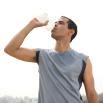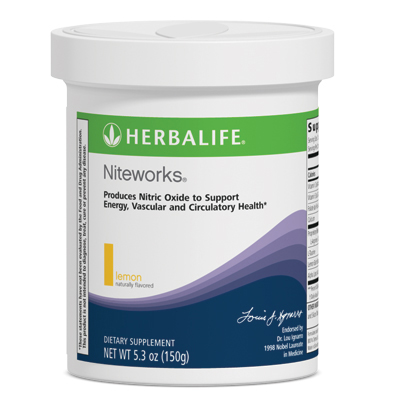 Kids can be picky eaters, but here’s a short list of some nutrition-packed foods that most kids enjoy.
Kids can be picky eaters, but here’s a short list of some nutrition-packed foods that most kids enjoy.
It’s always funny to me when people ask me how my kids ate when they were little. I’m sure that most of them think that since I do what I do, my kids must have been perfect eaters – or that I had some special tricks up my sleeve that made them beg for broccoli. Truth be told, my kids were no different from most other kids – they had their likes and their dislikes – and they’d go on food jags where they’d want to eat the same thing every single day.
Naturally, it did concern me a bit that their nutritional needs weren’t always being met, but there were several really healthy foods that they were almost always willing to eat. I just downplayed the “healthy” part – because once you tell kids something is “good for you”, that’s one of the quickest, surest paths to rejection.
So here’s a list of are of my top-rated foods for kids – they’re good, and good for them:
•Tunafish – Many kids turn their noses up at fish, but they’ll eat tuna salad. Like all fish, tuna is a great source of healthy omega-3 fatty acids and is rich in protein. Try mixing your canned tuna with mashed avocado instead of mayonnaise for a healthier tuna salad, and serve with some whole grain crackers – kids love to make their own little cracker sandwiches.
•Smoothies – A lot of kids fall short when it comes to meeting their calcium needs, and many don’t eat enough fruit, so smoothies can help fill both gaps. They’re quick and easy to make, and they’re great when things get rushed in the morning. Kids love to make their own – if you’ve got lowfat milk, protein powder and some frozen fruit at hand, your kids can take it from there.
•Carrots – Kids and vegetables often don’t mix, but sweet, crunchy raw carrots are an exception. Carrots are rich in beta carotene to help support healthy skin and eyesight, and they’re also a good source of fiber. They’re fun to eat plain, or dipped in fat-free ranch, salsa or guacamole.
•Oatmeal – It takes just a few minutes to cook up some rolled oats which are naturally rich in fiber and B-vitamins. Try making it with nonfat milk or soymilk rather than water, to boost calcium and protein, then sweeten lightly, and stir in some diced fruit like bananas or apples.
•Strawberries – Kids love strawberries because they taste so good – but they’re also packed with vitamin C, potassium and fiber. When fresh berries are unavailable, use the frozen whole berries in smoothies or mixed with yogurt.
•Nuts – Instead of chips, offer kids nuts to satisfy their craving for something crunchy and salty. Tree nuts like almonds, walnuts or pistachios provide healthy fats, protein and minerals like zinc and magnesium.
•Beans – Beans do double nutrition duty for kids – they’re not only a good source of iron but they’re a great fiber source, too. Most kids will eat canned beans seasoned with a touch or ketchup, barbecue sauce or salsa – you can also try bean soup, or whirl some beans in the blender with a little salt, lemon and olive oil for a tasty hummus dip for raw veggies.
•Smoothies – A lot of kids fall short when it comes to meeting their calcium needs, and many don’t eat enough fruit, so smoothies can help fill both gaps. They’re quick and easy to make, and they’re great when things get rushed in the morning. Kids love to make their own – if you’ve got lowfat milk, protein powder and some frozen fruit at hand, your kids can take it from there.
•Carrots – Kids and vegetables often don’t mix, but sweet, crunchy raw carrots are an exception. Carrots are rich in beta carotene to help support healthy skin and eyesight, and they’re also a good source of fiber. They’re fun to eat plain, or dipped in fat-free ranch, salsa or guacamole.
•Oatmeal – It takes just a few minutes to cook up some rolled oats which are naturally rich in fiber and B-vitamins. Try making it with nonfat milk or soymilk rather than water, to boost calcium and protein, then sweeten lightly, and stir in some diced fruit like bananas or apples.
•Strawberries – Kids love strawberries because they taste so good – but they’re also packed with vitamin C, potassium and fiber. When fresh berries are unavailable, use the frozen whole berries in smoothies or mixed with yogurt.
•Nuts – Instead of chips, offer kids nuts to satisfy their craving for something crunchy and salty. Tree nuts like almonds, walnuts or pistachios provide healthy fats, protein and minerals like zinc and magnesium.
•Beans – Beans do double nutrition duty for kids – they’re not only a good source of iron but they’re a great fiber source, too. Most kids will eat canned beans seasoned with a touch or ketchup, barbecue sauce or salsa – you can also try bean soup, or whirl some beans in the blender with a little salt, lemon and olive oil for a tasty hummus dip for raw veggies.
*Herbalife markets protein shake mixes for kids.







